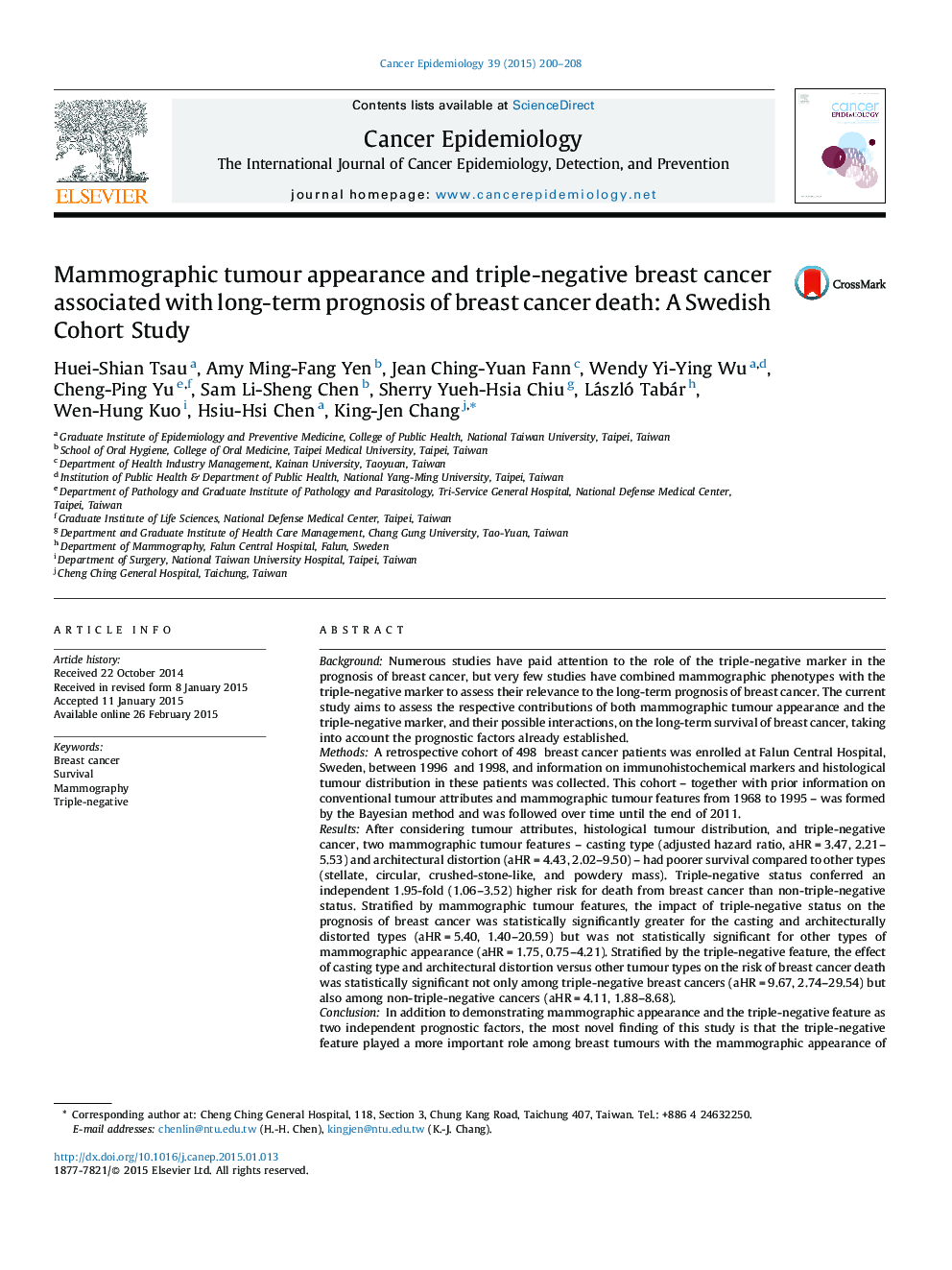| کد مقاله | کد نشریه | سال انتشار | مقاله انگلیسی | نسخه تمام متن |
|---|---|---|---|---|
| 2108890 | 1083847 | 2015 | 9 صفحه PDF | دانلود رایگان |
• A Bayesian approach was conducted to capture the evolution of tumour attributes.
• Casting and architecture distortion contribute 10- and 4-fold risk for TNBC and NTN.
• The effect of triple-negative was noted only in casting and architecture distortion.
BackgroundNumerous studies have paid attention to the role of the triple-negative marker in the prognosis of breast cancer, but very few studies have combined mammographic phenotypes with the triple-negative marker to assess their relevance to the long-term prognosis of breast cancer. The current study aims to assess the respective contributions of both mammographic tumour appearance and the triple-negative marker, and their possible interactions, on the long-term survival of breast cancer, taking into account the prognostic factors already established.MethodsA retrospective cohort of 498 breast cancer patients was enrolled at Falun Central Hospital, Sweden, between 1996 and 1998, and information on immunohistochemical markers and histological tumour distribution in these patients was collected. This cohort – together with prior information on conventional tumour attributes and mammographic tumour features from 1968 to 1995 – was formed by the Bayesian method and was followed over time until the end of 2011.ResultsAfter considering tumour attributes, histological tumour distribution, and triple-negative cancer, two mammographic tumour features – casting type (adjusted hazard ratio, aHR = 3.47, 2.21–5.53) and architectural distortion (aHR = 4.43, 2.02–9.50) – had poorer survival compared to other types (stellate, circular, crushed-stone-like, and powdery mass). Triple-negative status conferred an independent 1.95-fold (1.06–3.52) higher risk for death from breast cancer than non-triple-negative status. Stratified by mammographic tumour features, the impact of triple-negative status on the prognosis of breast cancer was statistically significantly greater for the casting and architecturally distorted types (aHR = 5.40, 1.40–20.59) but was not statistically significant for other types of mammographic appearance (aHR = 1.75, 0.75–4.21). Stratified by the triple-negative feature, the effect of casting type and architectural distortion versus other tumour types on the risk of breast cancer death was statistically significant not only among triple-negative breast cancers (aHR = 9.67, 2.74–29.54) but also among non-triple-negative cancers (aHR = 4.11, 1.88–8.68).ConclusionIn addition to demonstrating mammographic appearance and the triple-negative feature as two independent prognostic factors, the most novel finding of this study is that the triple-negative feature played a more important role among breast tumours with the mammographic appearance of casting and architectural distortion than among tumours with other types of mammographic appearance. The risk stratification of long-term prognosis of breast cancer in the light of multi-attribute information in chronological order (mammographic tumour appearance first and then the triple-negative test) may aid clinicians in developing a customised schedule of surveillance and in optimising treatment and adjuvant therapy.
Journal: Cancer Epidemiology - Volume 39, Issue 2, April 2015, Pages 200–208
